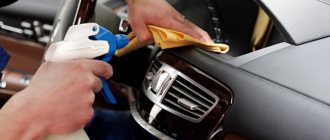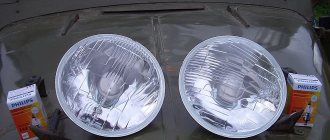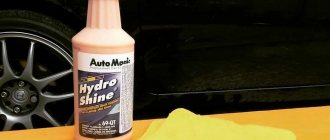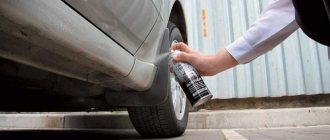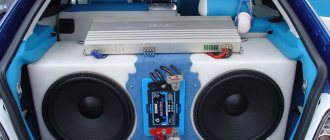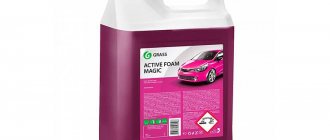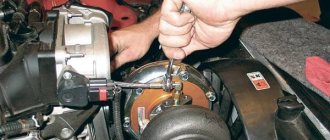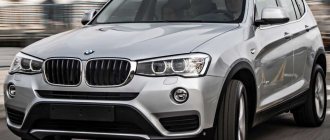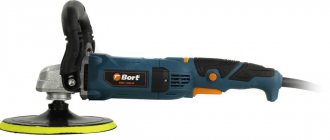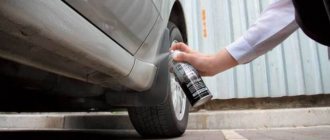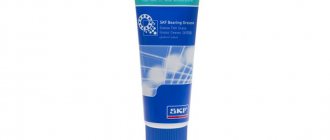A car is not just a means of transportation, but an iron friend. You can use it to wait out a quarrel with your wife or just be alone or go to another city. But while the owner spends the rest of the time under the roof of his house, the car meekly endures external influences.
Reagents and climatic conditions leave marks on the body and other parts of the vehicle over time. The coating applied by the manufacturer will not save you from rust. It will gradually disappear even with the most careful use of the car. A special protective agent called “anti-corrosion” is designed to stop the occurrence of corrosion.
Description and characteristics of the product
Most vehicles are treated with mastic in the factory. It will do the job well with perfect adhesion to the metal surface. Only unstable weather conditions and operating conditions of the car greatly reduce the level of adhesion.
Therefore, you need to use an anti-corrosion agent that is applied to areas most susceptible to rust. These are the bottom, body, wheel arches. After application, the soluble components evaporate and a solid film forms on the surface.
Anticorrosive becomes a barrier between car parts and the external environment. It slows down oxidative processes, but does not cure corrosion or change the structure of the metal. Treating an already damaged area with the product is useless.
Funds can be divided into two main groups, depending on the type of base:
- bitumen;
- based on different types of wax.
The best manufacturers are trying to improve anticorrosive properties, so they use additives. The latter are designed to make the material more efficient and increase its strength. Popular models include anticorrosive agents with rubber, rubber and plastic additives.
An anti-corrosion agent for a car is used to:
- save money, because the price of the substance will be cheaper than body repair;
- increase the service life of individual vehicle parts.
Advantages and disadvantages
To benefit from using anticorrosive, you need to know how to choose and apply the product. Efficiency is also determined by the brand and quality of surface preparation. If all conditions are met, the product will reliably protect the car from rust and external mechanical damage.
With the help of anticorrosive, it will be possible to extend the life of the vehicle for several years, slowing down the process of natural wear and tear of the metal. At the same time, every car owner should not forget about three things:
- After covering the car body with anticorrosive, noise insulation cannot be installed. Therefore, you will have to choose one thing - either sound insulation or anticorrosive. The only way out is to look for a product that absorbs noise.
- A pungent unpleasant odor is one of the properties of the anti-corrosion substance. It will disappear only after a few days.
- Contains complex chemicals. Therefore, the application technology must be followed without the slightest changes. Otherwise, the desired effect will not be achieved.
The main advantage of the anti-corrosion agent is hydrophobicity. It repels water, preventing moisture from remaining on the surface of the car after washing or rain.
Classification of the product
Which anticorrosive agent is best to buy is a question that torments all vehicle owners, both beginners and experienced ones. The assortment presented on the shelves of specialized stores can be divided into several categories. The material is classified according to the place of application: there are means for hidden parts and the outer surface.
Anticorrosive substances differ in chemical composition into the following types:
- bitumen mastics, which are made from synthetic resins. Their purpose is to prevent gravel and stones from leaving scratches on the surface. The thickness of the applied layer is 250-400 micrometers;
- based on polyvinyl chloride and rubber. These are the best tools that car manufacturers usually use. They are ideal for the bottom because they have high adhesion, increased durability and can withstand any temperature changes. The products have only one drawback - without skill and special equipment they are extremely difficult to apply;
- oil-based, which actively penetrate into pores and cracks. They remain liquid throughout their entire service life;
- with paraffin and wax, which have demonstrated excellent resistance to temperature changes. After application, the material forms an elastic film that prevents corrosion.
Liquid plastic can be used as an additional means, but you cannot rely on it completely, since the material is not durable and reliable. If you need an anticorrosive agent with high adhesion, you should pay attention to a rubber agent.
The difference between oil and paraffin products is that the former provide good protection to moving parts and hard-to-reach surfaces. The second type of material will dry out and crumble when moved.
Popular products also include shale, made from bitumen and synthetic resins with the addition of natural filler. The advantage of anticorrosive coating is its high strength, so the coating is not susceptible to mechanical stress. The product can be used to treat the underbody and wheel arches.
Selection criteria and requirements for funds
Before you decide which anticorrosive company is better, you should understand what requirements it must meet. Although the range is divided into groups, each substance must have the following properties:
- high adhesion to the car surface;
- ideal filling of hard-to-reach places and chips;
- hydrophobicity;
- creating a uniform coating for a long time.
Factory treatment will last two to three years. During this period, it will not lose its physical properties and will reliably protect the car.
When choosing an anticorrosive agent for treating the bottom, it is important to remember the adhesion and elasticity indicators. The product did not crack or collapse due to the impacts of crushed stone that flies out from under the wheels of passing cars. The anti-gravel coating will protect various body elements from chips and scratches.
When is anti-corrosion treatment necessary?
Previously, the most budget cars were delivered without anti-corrosion treatment at all. Also, the quality of protection of metal body parts of the cars did not differ from the Russian companies GAZ, VAZ and UAZ. All these cars had to be further processed, and many carried out this processing on their own in the garage. This arrangement did not prolong the life of the body very adequately, since the coating quickly wore off and deteriorated. It is worth doing anticorrosive in the following cases:
- you buy a domestic car - to this day, at factories in Russia, anti-corrosion treatment remains a higher mathematics, they cannot do it efficiently;
- you are buying a budget car that is assembled in the CIS countries - such cars do not always have decent anticorrosion protection; in most cases, at this stage, manufacturers save a lot;
- your car has been sitting for 1-2 years in an open-air showroom or even in a dealer’s warehouse, it is better in this case to update the anti-corrosion coating and make sure that it is normal;
- car after a test drive or other manipulations with a discount, in this case you should carefully look at the layer of anti-corrosion treatment on the bottom and think about additional measures;
- reviews about your make and model of car say that corrosion appears quickly; today there are fewer and fewer such cars, but they do exist, so you should choose carefully.
Chinese cars are also extremely interesting in this case. The Chinese carry out anti-corrosion treatment all the time, but they use materials of terrible quality. While the car is driving around Russia on a car transporter, its anti-rust coating will successfully come off, leaving the metal bare. So when buying a Chinese one, the first thing you should do is contact a good service and get anticorrosive work done. This procedure should be repeated once every 2-3 years to maintain normal body quality in the future.
Rating of high-quality and popular anti-corrosion products for cars in 2021
According to buyers, it is better to give preference to products from foreign manufacturers. But there are domestically produced products that are not inferior in quality to their foreign counterparts. The rating included both inexpensive products and premium formulations for hidden surfaces and external treatment. The popularity of the models is ensured by price, quality and composition.
Dinitrol is an expensive but convenient product for self-application
The company has been producing a variety of protection products for cars since back in 1939. Although the products are expensive, they are effective. Numerous consumer reviews confirm this.
In the assortment you can find a product for every part of the vehicle. The manufacturer produces anticorrosive even for the interior, muffler and engine compartment. Dinitrol products have won the hearts of car owners with their high quality. They are made with powerful inhibitors, polyurethane adhesives, anti-gravel additives and anti-corrosion materials. Some ortho- and dinitro components are invented by the manufacturing company.
Dinitrol anticorrosive
Advantages:
- high level of sound insulation;
- the treated surface is inherently tight;
- “heals” minor flaws;.
Flaws:
- high price.
Average price: 1,146 rubles.
Hi Gear – fast-drying grout treatment product
Anticorrosive material with rubber filling has excellent water-repellent properties. After processing the car, a film is formed, thanks to which the part does not recognize what rust is. In addition to its anti-corrosion properties, Hi Gear does not allow chemicals and salts that are present on the road surface to damage the exposed surfaces of the car.
The product is used for body voids, but seams and joints can also be treated with it. Anticorrosive agent dries quickly on aprons, sills and wheel arches. The quality of the substance fully justifies the cost. First of all, owners of new vehicles or used cars, but in good condition, should turn to Hi Gear.
Hi Gear anticorrosive
Advantages:
- contains special corrosion inhibitors;
- has not only sound-proofing properties, but also heat-insulating properties;
- high elasticity of the film, which does not decrease over time.
Flaws:
- during primary treatment, two layers must be applied;
- ineffective against severe surface corrosion.
Average price: 400 rubles.
Noxudol – anticorrosive agent with excellent sound insulation properties
The Swedish company's products appeared on the market a long time ago and have remained one of the favorites ever since. The manufacturer produces a variety of products for metal parts and vulnerable body parts. Universal anti-corrosion agent suitable for external and hidden parts.
It reduces the noise level in the cabin, and also protects the bottom and internal cavities from gravel and sand. What to pay attention to when purchasing is the type of product. There are anticorrosive agents for individual use and professional ones, which are usually used at service stations. Since the consistency of the product is very thick, it is better to entrust the application to specialists. Since independent processing will be time-consuming and inconvenient.
Noxudol – anticorrosive
Advantages:
- manufacturing according to European quality standards;
- with sound insulation effect;
- a large assortment.
Flaws:
- takes a long time to dry, about three days;
- Electrical wiring must be insulated before application.
Average price: 710 rubles.
LIQUI MOLY - inexpensive but reliable anticorrosive agent
If an anti-corrosion agent is selected based on price/quality ratio, you should pay attention to LIOUI MOLY. It is in demand not only in Russia, but also abroad. Anticorrosive prevents rust from attacking the surface, forming an elastic film.
It is better to apply LIOUI MOLY in two layers. The German manufacturer also offers spray and varnish to protect metal parts of cars. The main advantage of anticorrosive is that it prevents the occurrence of rust.
LIQUI MOLY anticorrosive
Advantages:
- excellent adhesion. The product adheres even to the surface of old cars;
- high level of elasticity;
- the price is moderate, but the quality is high.
Flaws:
- to obtain the desired effect, the product is applied in two layers;
- It does not have dirt-repellent properties, so it collects a lot of dust.
Average price: 490 rubles.
SUPRA-Shield is a product for those who want to save money
The anticorrosive composition includes corrosion inhibitors and water-displacing substances. Therefore, it can be applied to a wet surface without waiting for it to dry. Cars are treated at any temperature.
The texture of SUPRA-Shield is a liquid anticorrosive agent, so it penetrates well into the surface, including layer rust, and stops the process. The moderate price for 1 liter of protective agent attracts those who first look at how much the anticorrosive agent costs, and then just buy
SUPRA-Shield anticorrosive
Advantages:
- simple application process;
- reasonable price;
- Suitable for processing weld seams.
Flaws:
- strong smell;
- The product drains from hidden parts of the car for a long time.
Average price: 200 rubles.
Cordon is an ideal option for the bottom
The company produces the product as an aerosol and in the form of mastics with a brush for application. The anticorrosive base is bitumen and synthetic resin. It turns into a black film that is not afraid of sudden changes in temperature and moisture.
You cannot get rid of Cordon after a simple wash or using auto chemicals. The product has soundproofing properties. In terms of quality, it is not inferior to foreign anticorrosive agents for external treatment.
Cordon anticorrosive
Advantages:
- good adhesion;
- prevents corrosion from developing;
- high quality.
Flaws:
- a strong and pungent odor that will disappear only after 10 days;
- It is better to apply at above-zero temperatures; at below-zero temperatures, the anticorrosive agent may harden;
- You should work with the composition carefully. It should not get on painted parts.
Average price: 300 rubles.
TECTYL – a product for difficult conditions
The manufacturer offers a bitumen agent for the bottom and a spray with added wax for hidden parts. In Russian conditions, the product Tectyl body safe with zinc is especially useful.
Thixotropic anticorrosive agent is sold in cans, but they are more expensive and packaged in cans. To apply the product in the second case, you will need a compressor. Therefore, despite the price, spray cans are more often purchased.
TECTYL anticorrosive
Advantages:
- high durability of the coating;
- wide range of products;
- reliability;
- Suitable for cold winter.
Flaws:
- applied only to a dry surface;
- high price.
Average price: 1,174 rubles for a spray, 4,275 rubles for a 5 liter jar.
Crown – anticorrosive with quick effect
The product is based on oil, so it will not harm the paint layer of the car. Anticorrosive also has water-displacing properties, which allow it to be applied immediately after washing without waiting for it to dry.
The Canadian manufacturer is constantly adding to its range, improving the product. One of the popular new products, Krown 40, is designed for direct rust treatment. It is used to process the bottom, wheel arches, and hidden cavities.
Crown – anticorrosive
Advantages:
- practical packaging in aerosol cans;
- ease of application to hidden cavities;
- the effect is noticeable after 2 hours.
Flaws:
- not so beneficial for underbody protection;
- When operating machines in harsh climates, the product is applied once a year.
Average price: 580 rubles.
Price examples
Moscow and St. Petersburg hold the lead in the cost of underbody anti-corrosion treatment services; in these cities prices start from 3,000 and can reach 15,000 rubles, depending on the size of the car.
By region of Russia, average prices look like this:
- Passenger cars of domestic production 2500-4000 rubles .
- Imported passenger cars RUB 3,200-5,000 .
- Partekniki (small jeeps) 4500-6000 rubles .
- Large SUVs 5000-6500 rub .
- Minibuses and large minivans 6000-8000 rubles .
- Limousines up to 7 meters in length 6500-9000 rubles .
- Limousines over 7 meters in length RUB 7,000-11,000 .
Be sure to clarify and agree on the means used, because their range is large, and sometimes the properties are slightly different.
How to choose an anti-corrosion agent for a car
To avoid mistakes when choosing, you should take into account the condition of the vehicle, the location and method of processing. But effective protection of the body and other parts of the car can be guaranteed if the instructions for using anticorrosive agents have been read and strictly followed.
Car owners who live in regions with sudden changes in temperature should take a closer look at the RunWay line. If rust is already present on the car, you should choose Hi Gear. When you need a reliable and extra-elastic product, you should take a closer look at Movil, rubber mastics. For luggage compartments where there is no paint layer, bitumen-rubber mastics are suitable.
When choosing a product, it is important to understand that it will not be possible to find a car anticorrosion agent that will solve all problems at once. It must be selected taking into account the characteristics of the machine. That is why there is such a variety of products on sale.
Before purchasing, you should study the functionality of each, read reviews and advice from experienced car owners. There are budget and expensive anticorrosion agents on sale, with and without the function of reducing noise in the cabin.
Classification of materials
Modern materials are divided by composition into wax-based and bitumen-based mixtures. In addition, there is the following classification of funds:
- Aimed at protection in hard-to-reach places.
- To protect the outer surface.
“Liquid fender liners” are applied by spraying using compressed air and a “gun”
Each of them has subspecies. For example, the first group of products comes in two types: non-drying anticorrosive – copes well with microcracks, completely filling them; and wax-based paraffin mixtures - repels moisture and prevents oxidation of the body, creating an invisible film.
To protect the upper surfaces, bitumen mastic, liquid plastic and rubber-based PVC mastic are used.
Bitumen mastic is applied in a layer of 0.25-0.4 mm. The material creates a double layer that protects the body from impacts from stones, sand and other debris. Rubber mastic is known as a durable product with high strength. Liquid plastic is used as an additional anti-corrosion agent, as it has low resistance to damage.
How to treat the underbody of a car
As you can see, processing the car in general and protecting the bottom from corrosion in particular can be done using various materials, and if necessary, all work can be carried out in a regular garage. In other words, the body and underbody of the car can be treated with a suitable anticorrosive agent with your own hands.
At the same time, in practice, it is quite difficult to quickly determine how best to treat the underbody of a car. If new cars without mileage are quite successfully protected with rubber-bitumen compounds (the bottom of a new car is clean, free of moisture, dirt and dust), then for used cars this solution is often not the most suitable
The general condition of the bottom is also important. . The reason is that in artisanal conditions it is difficult to clean the surface and dry the bottom properly
Taking into account such difficulties, the solution to use active corrosion protection looks more attractive and rational. However, this method is suitable if the bottom is intact and the composition is applied for preventive purposes.
The reason is that in artisanal conditions it is difficult to clean the surface and dry the bottom properly. Taking into account such difficulties, the solution to use active corrosion protection looks more attractive and rational. However, this method is suitable if the bottom is intact and the composition is applied for preventive purposes.
If the bottom is severely damaged by rust, then it is optimal to do comprehensive protection of the bottom, which includes all the methods discussed above at the same time: transformation of corrosion, priming, application of mastic and surface treatment of the rubber-bitumen layer with an active anticorrosive agent such as Moville.
When it comes to formulations, there are many solutions available on the market. If you choose the right anticorrosive agent, taking into account the application features, treating the underbody of the car with your own hands will not be a difficult process.
For example, the anti-corrosion treatment of a car body with the RUST STOP material has proven itself to be excellent. The product is imported, developed in Canada. This is a fluid composition with active additives that can be poured into hidden cavities, treated on top of the body, and also treated with it on the bottom of the car.
Available in two types: for the bottom and for hidden cavities. The first is thicker and stays on the surface longer, while the second is thinner, has increased fluidity and an outstanding ability to penetrate even hard-to-reach places.
As for the do-it-yourself treatment with various anticorrosive agents, the process of applying mastics often comes down to the following:
- the bottom needs to be washed and dried;
- then corrosion is removed using sandpaper, abrasive pastes or a rust converter;
- then the surface is degreased with a solvent;
- then the bitumen composition is applied with a brush;
Upon completion, the surface should dry (complete drying up to 4 days). The mastic has good adhesion, is plastic and can partially resist even mechanical damage. It turns out that mastic for treating the bottom is a cheap and affordable product.
If we talk about liquid anticorrosives, they are usually sprayed from a can or applied using a sprayer and compressor. The advantage is that to apply such a composition, the bottom does not require special preliminary preparation. This greatly simplifies the processing process.
Let us also add that in reality, if we consider such an anticorrosive agent, the price compared to various analogues is not the lowest, but not the highest either. Moreover, the composition is easy to apply, surfaces do not require special preparation before treatment, etc.
